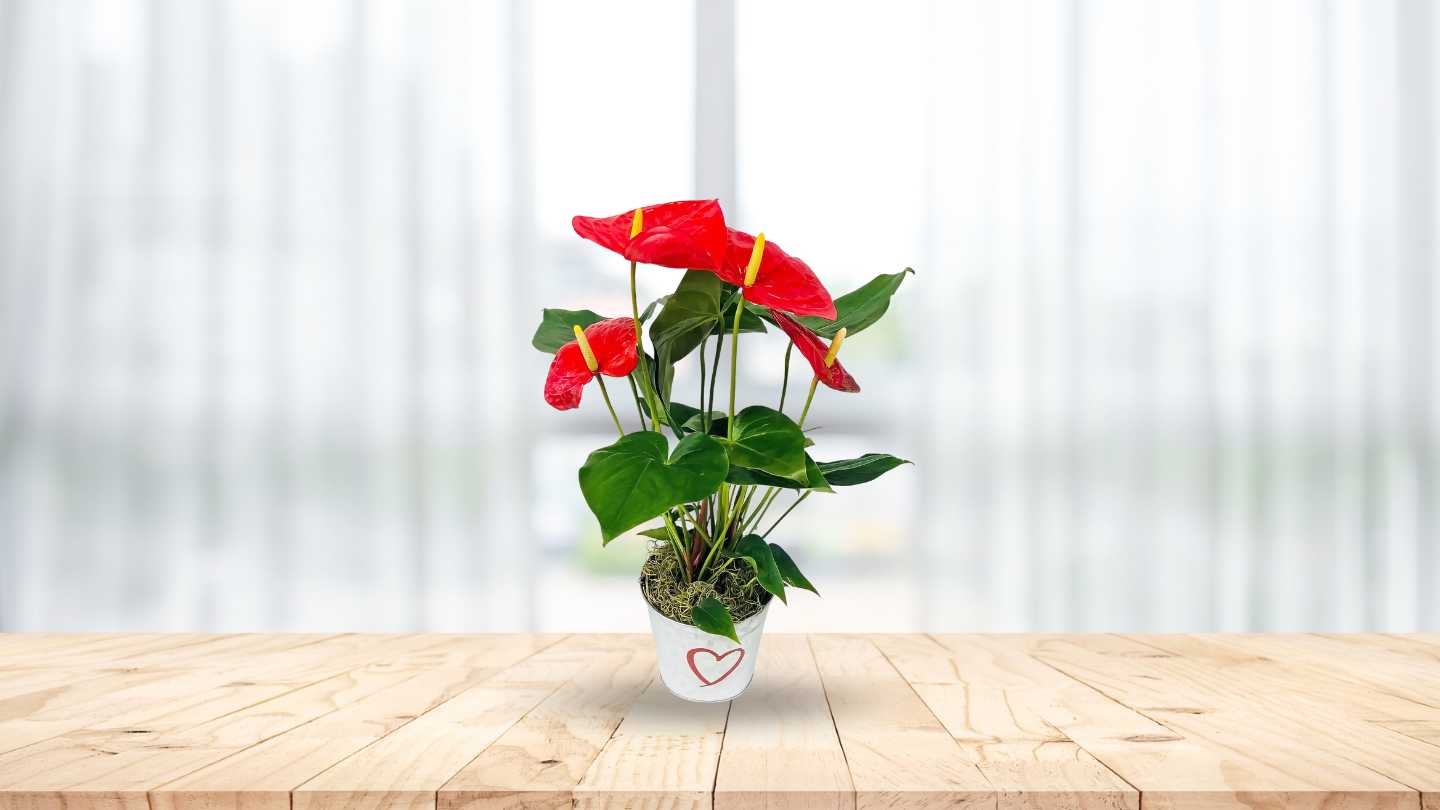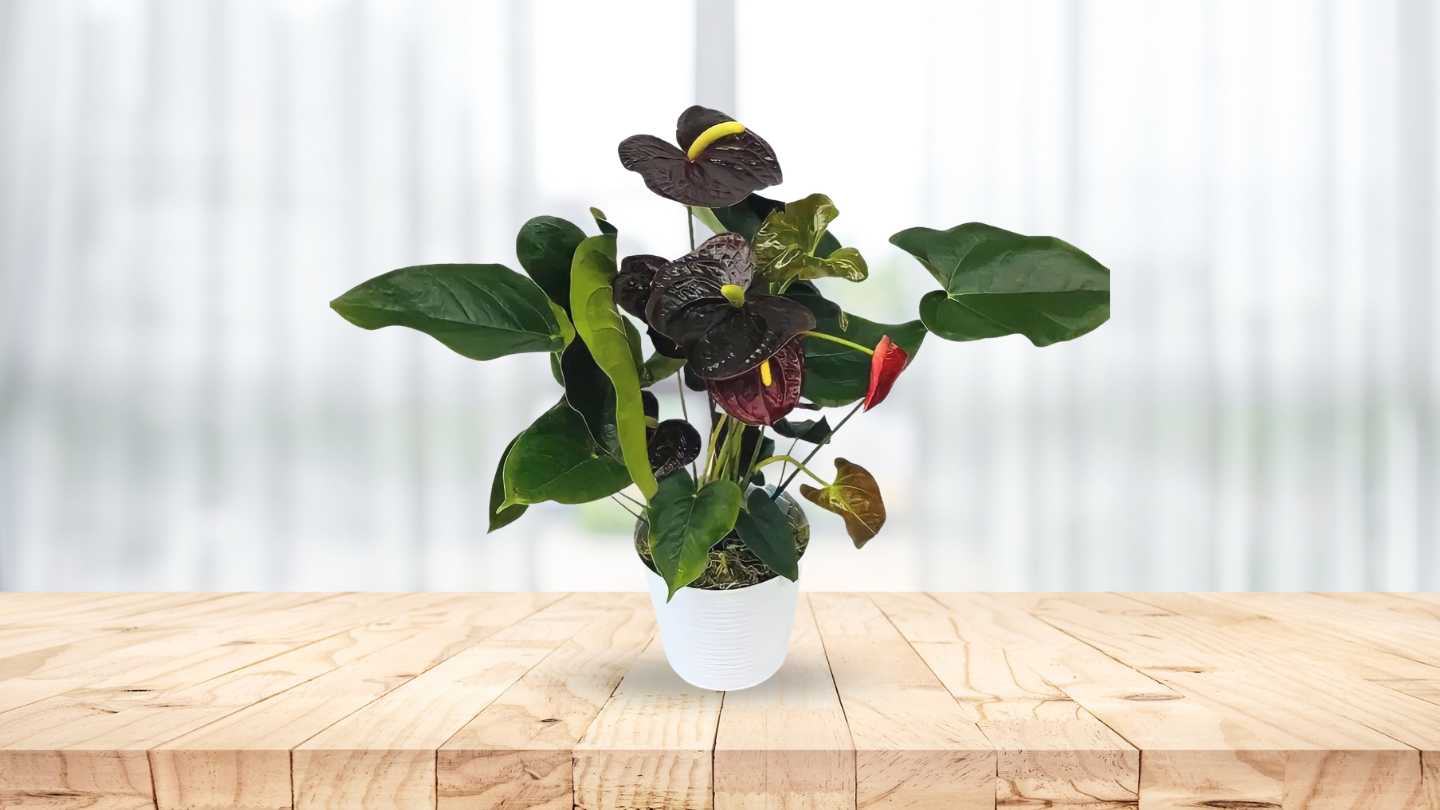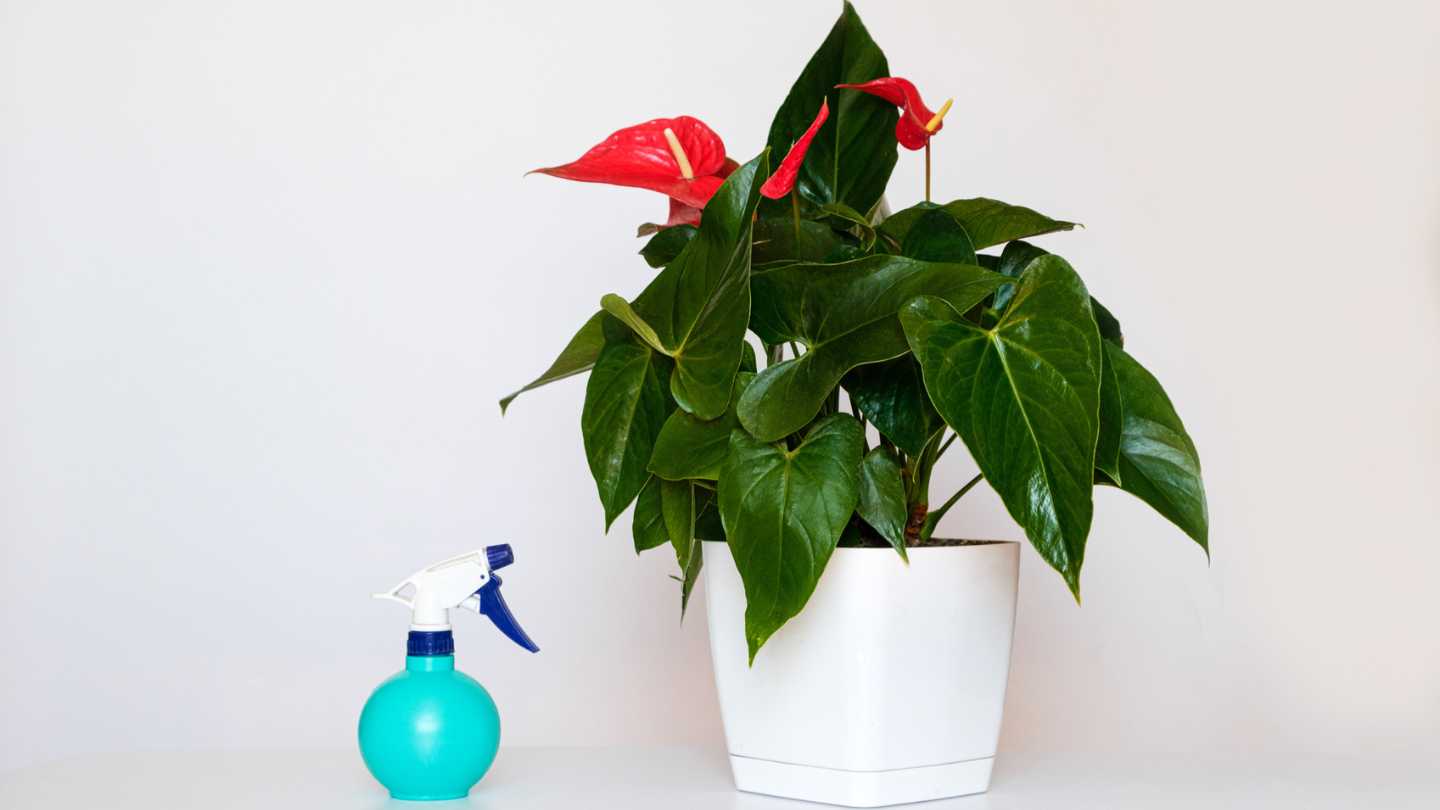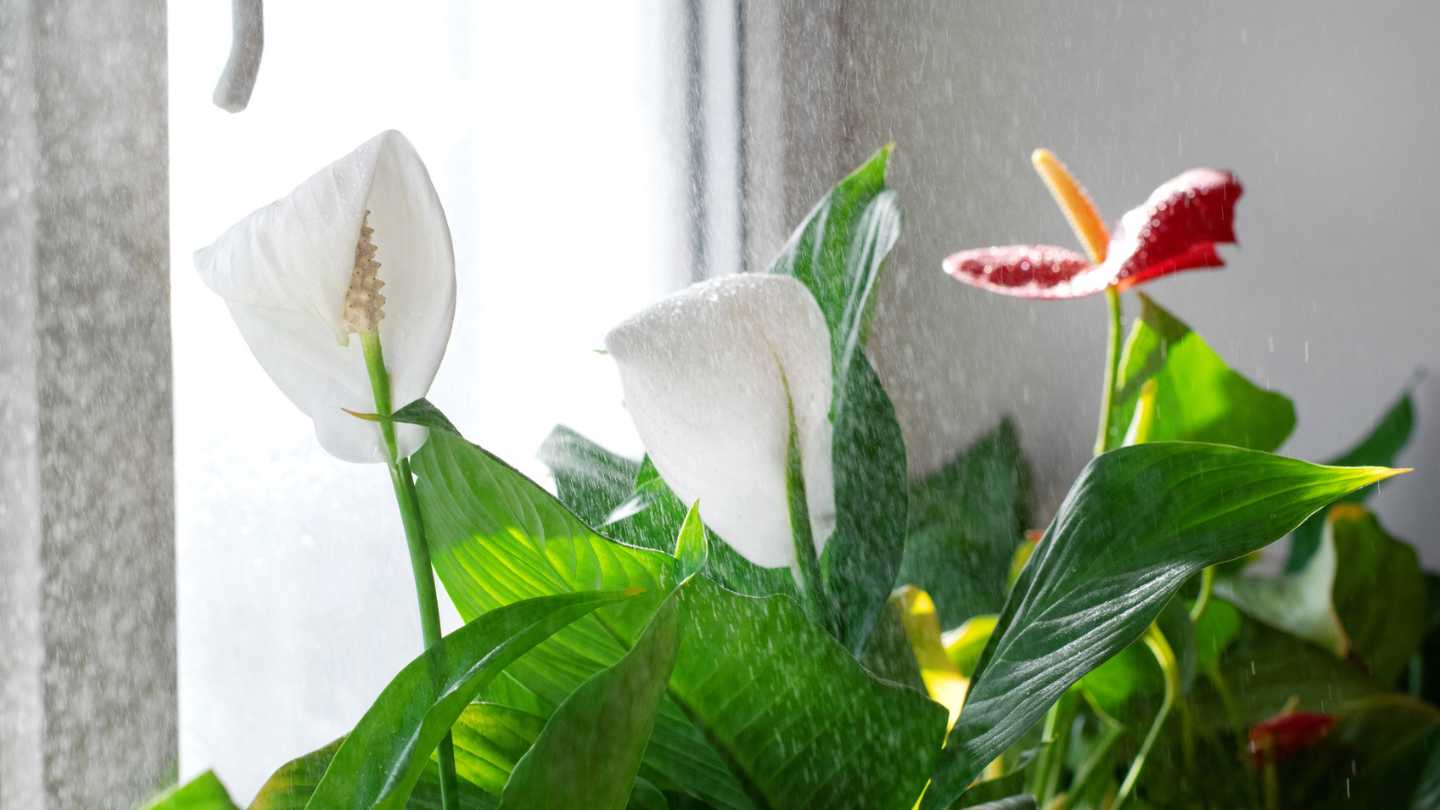How to Care for Anthuriums?
Anthuriums are some of the most popular houseplants in the world. They are easy to care for and come in many colors, sizes, shapes, and varieties. They have relatively few care requirements and thrive in various conditions. This blog post will discuss anthuriums and how to care for them.

Knowing Anthuriums
Anthuriums, commonly called Flamingo Flower or Flamingo Lilies, belong to the arum family. Like all other aroids, anthuriums are also tropical and subtropical in their growth habit. Anthurium plants are popularly grown as evergreen houseplants. There are foliage anthuriums and flowering anthuriums. Foliage anthuriums are grown for their dark green, velvety, heart-shaped leaves, while flowering anthuriums are for their bright and colorful spathes.
Origin
It is a plant indigenous to rainforests in South America and the Caribbean, where it thrives under or beneath huge trees. It enjoys similar warm, muggy, dappled circumstances and is relatively simple to care for.

Popular Species of Anthuriums
Foliage Anthuriums
- Anthurium Gracile or Red Pearls Anthurium
- Anthurium Veitchii or King Anthurium
- Anthurium Crystallinum or Crystal Anthurium
- Anthurium Cariaceum or Paddle-Leaf Anthurium
- Anthurium Waroqueanum or Queen Anthurium
Flowering Anthuriums
- Anthurium Andreanum or Painter’s Palette An
- Anthurium scherzerianum or Pigtail plant
- Anthurium Amnicola (Tulip Anthuriums)
What to look for when buying anthuriums?
When shopping for your anthurium, looking out for signs of good health is important. Steer clear of blooms that have developed purple or brown, or black spots, as these are signs that the chilling harm has progressed. The spathe needs to have a glossy appearance, and it shouldn't have any creases or blemishes. The spadix should have a smooth finish over a third of its tip.

How to Care for your Anthurium?
Anthuriums are low-maintenance and easy to grow. They need an environment rich in light and humidity to thrive. Here are the important tips for taking care of your anthurium:
Watering
Let the top layer of soil dry out between waterways. Keep it moist but don't let it stand in water. Too much water around the roots can cause root rot. The lighter and heat your anthurium gets, the more often it will need to be watered. Check the soil for dryness every few days.

Humidity
Anthuriums require high humidity for the best growth. Place the plants in a humidified environment, such as bathrooms, kitchens, or near humidifiers, to maintain adequate humidity levels. The levels of humidity should be around 60% or higher.
Fertilizer
Feeding your plant with a balanced liquid fertilizer diluted to half strength every two weeks during the spring and summer will encourage blooming. Do not feed during the cold months.
Light
Anthuriums need bright indirect light for healthy growth but avoid cold drafts and direct sunlight, which will damage their leaves. They can do well in a south or east-facing window that gets plenty of morning sun and shade from the afternoon sun. A sunny bathroom is ideal.

Temperature
Anthuriums do best in temperatures between 65°F and 80°F (18-27°C). They can handle some cooler temperatures but should not be exposed to temperatures below 55°F (13°C).
Propagation
Propagating anthuriums is relatively easy. Cuttings, seeds, or division of stems with roots can all be used for propagation. Cuttings are extracted from mother plants that are 3 to 4 years old; cuttings should have a few roots or at least one eye or bud to create new roots.
Pests and Diseases
Anthuriums are particularly susceptible to pests such as mealy bugs, whiteflies, spider mites, thrips, scale insects, and root-knot nematodes. Common diseases include bacterial blight, fungal leaf spots, and root rot caused by overwatering or poor drainage. Mildew can also be a problem in too much shade. Treat any pest infestation immediately before it spreads to other plants. Remove diseased leaves or stems as soon as they appear, and treat them with fungicide spray if necessary.
Carefully inspect your anthurium for any signs of pests or disease-carrying organisms regularly so that you can address the issue promptly without worrying about losing the plant.
Anthuriums come in many sizes and varieties, making them great additions to any home. Proper care and maintenance can bring life and color into your living space while purifying the air around you!
Follow the tips above, and you'll have gorgeous blooms throughout the year! Check out our website for Anthuriums and more plants. We have varieties of sizes, shades, and colors to brighten up your home!
Happy gardening! :)

